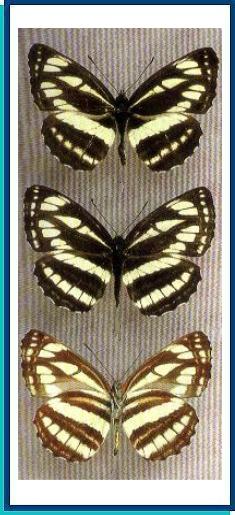LEPIDOPTERA
N Y M P H A L I D A E Swainson, 1827
NEPTIS Fabricius, 1807
Neptis sappho Pallas, 1771
Neptis sappho Pallas, 1771

•TYPE LOCALITY. «гoрa Ka6aн];Kaa, oKp. Vconbfi, IIlHroHCKoro panoHa, CaMapCKOH ry6.»(Korshunov, 1996). [Mt. Kabatskaya, near Usolie, Samara Region, Russia].
•SYNONYMS: aceris Lepechin, 1774; aceris Esper, 1783; leucothoe Cramer, 1782; plantilla Hubner, 1805; lucilla Schrank, 1801; matuta Hubner, 1819; intermedia Hormuzaki, 1897; curuata Matsumura, 1928; curvata Bryk, 1946, nom. praeoccup.
•RANGE. Forest and forest-steppe belts of Europe and Siberia; Nepal, Mongolia, China, Korea, Japan.
•DISTRIBUTION AND VARIATION. Relatively constant in external characters throughout the territories concerned. Some authors have recorded the ssp. intermedia Pryer, 1877 in the Amur and Ussuri regions, a form described from central China. However, our specimens deriving both from the Ussuri region and central Korea fail to differ in any respect from the nominotypical form.
•TAXONOMIC NOTES. In the literature, the identities of N. hylas Linnaeus, 1758 versus N. sappho Pallas, 1771 have often been confused (e.g., Kawazoe & Wakabayashi, 1977). Thus, N. hylas has erroneously been reported from the Amur and/or Ussuri regions. However, according to Eliot (1969), differing considerably from N. sappho both in size and colouration, N. hylas fails to occur over the territories in question.
•HABITATS AND BIOLOGY. Open places in light forest, along rivers and streams. In the northern part of the range, flying from mid-June to July in a single generation. In the south, flight in May to August in two generations. Host plants (Dantchenko & Nikolaevsky, in press) in central Russia: Lathyrus vernus; in the Ussuri region: first generation on Lathyrus humilis, second generation on Lespedeza bicolor. Larval instars live and hibernate in rolled leaves.
•SIMILAR SPECIES. Neptis riuularis: with one white band on UPH.
Photo and text: Guide to the BUTTERFLIES OF RUSSIA and adjacent territories Volume 2. PENSOFT, Sofia - Moscow. 2000